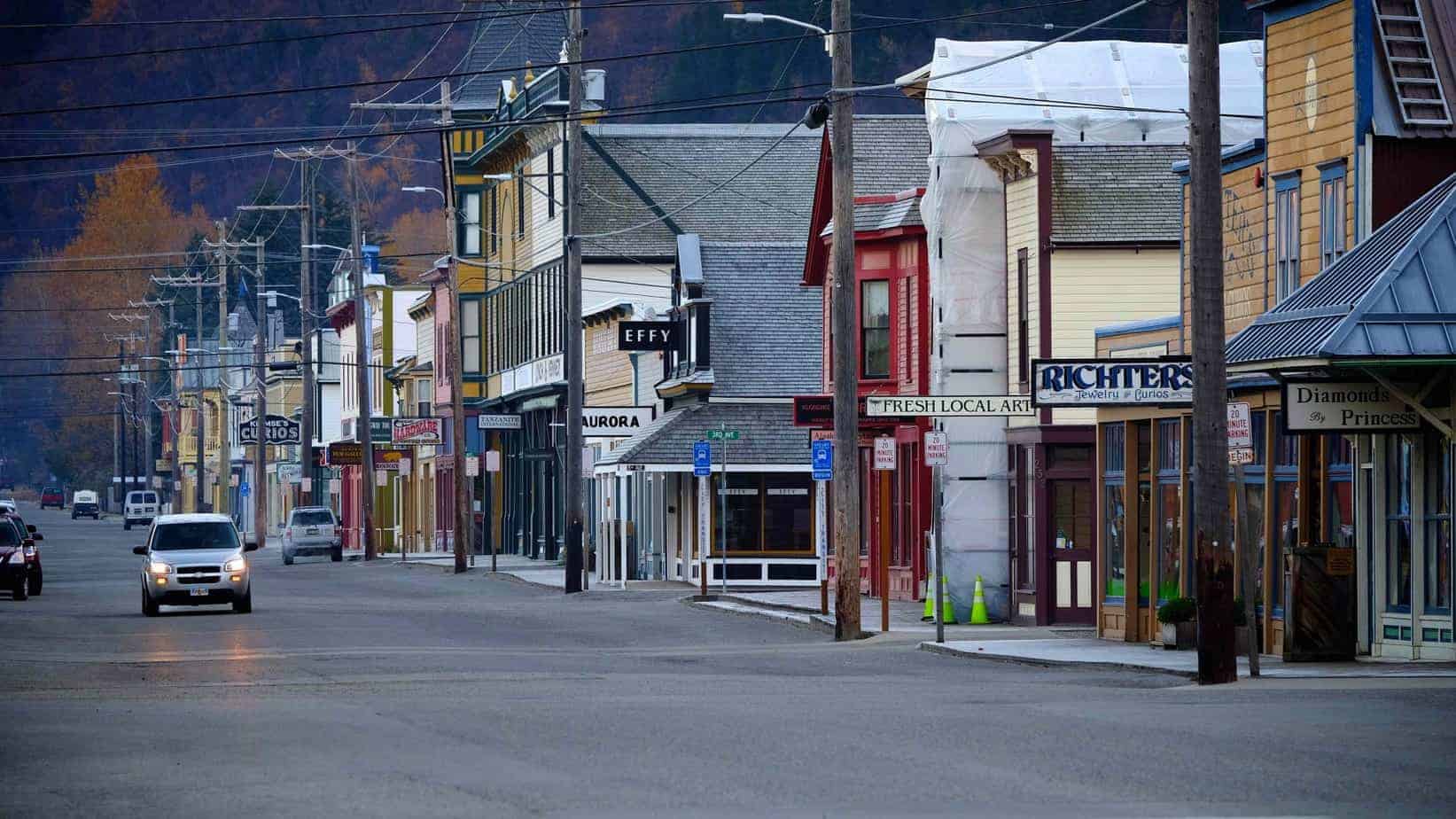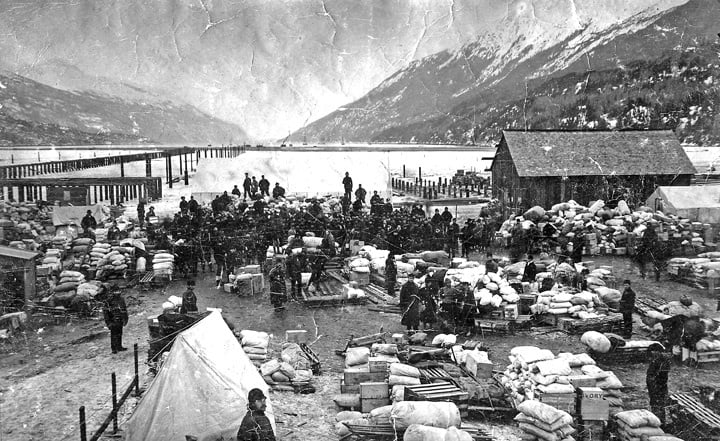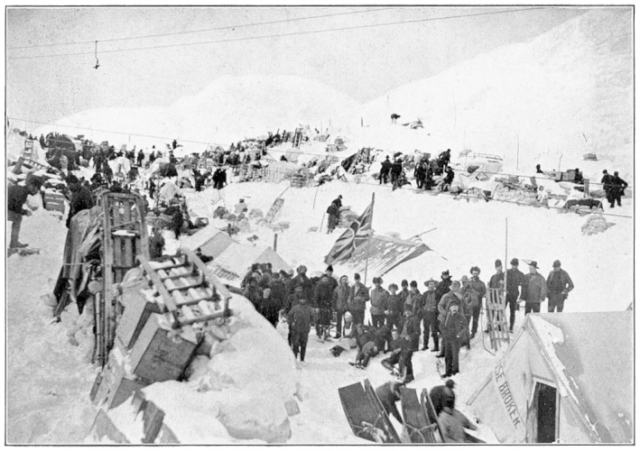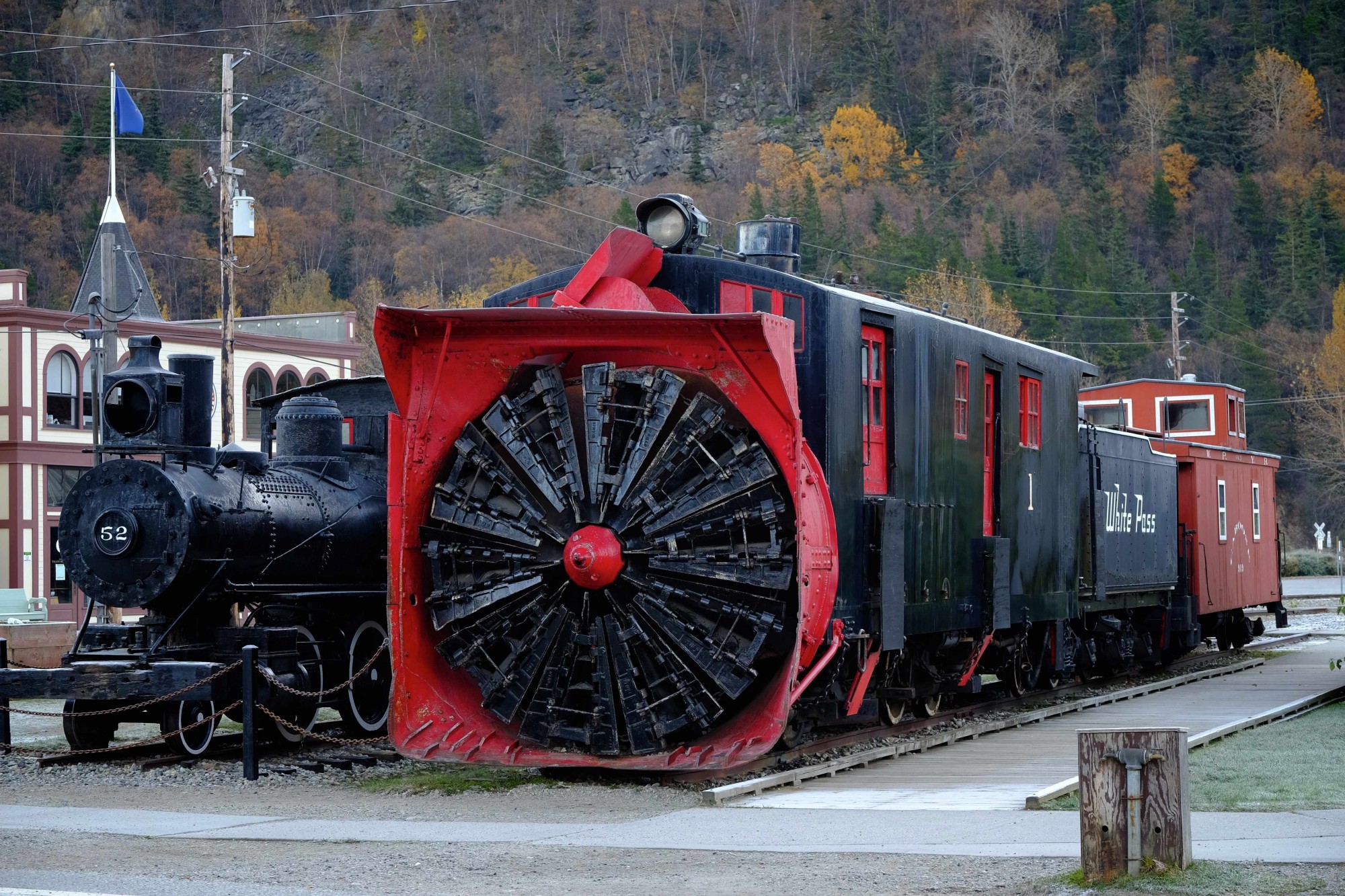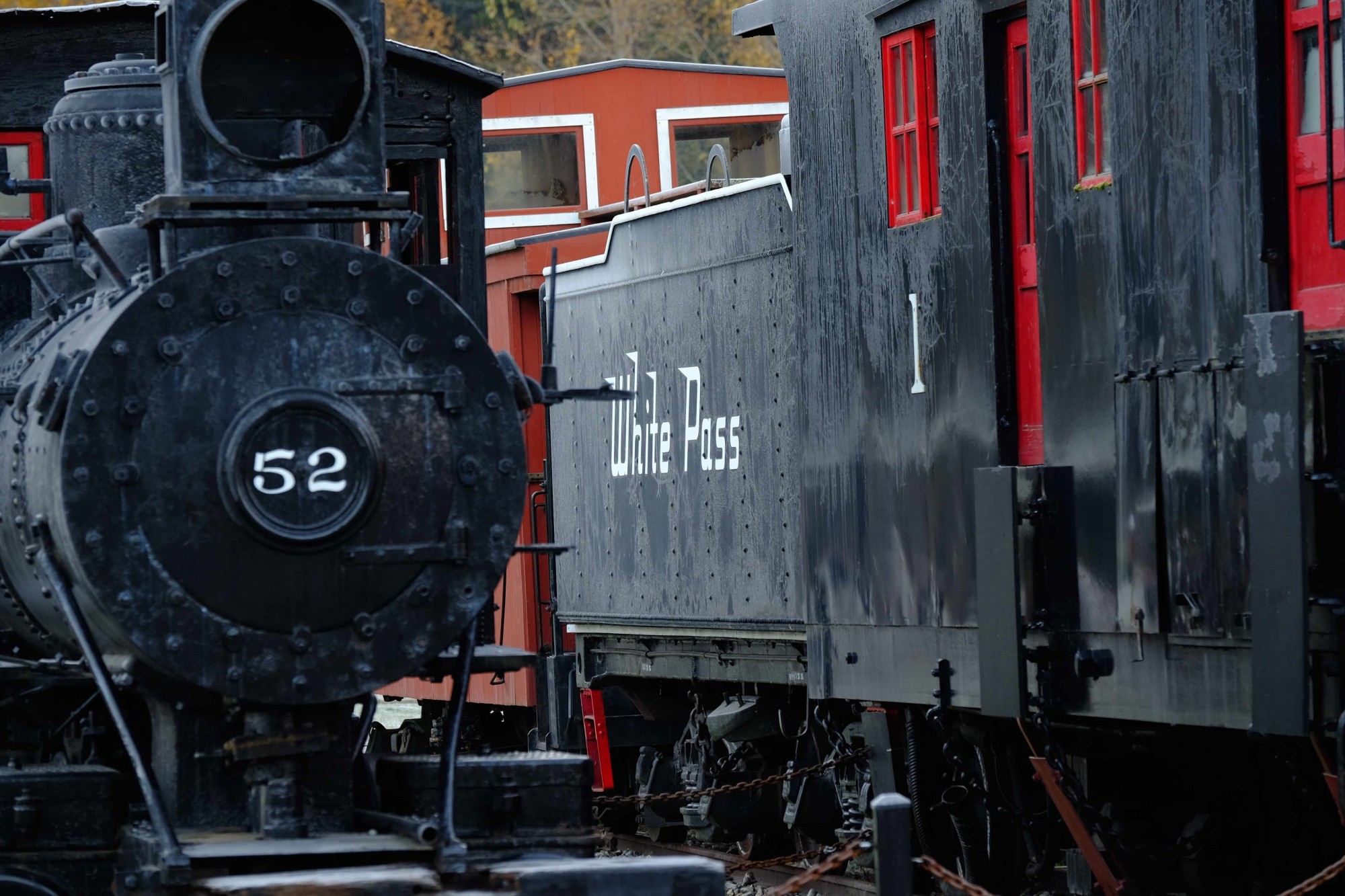Overlanders often say, it’s about the journey, not the destination. I’m here to say, that is not always true. Ask many overlanders headed to Alaska where they are going and they’ll often say with squinty eyes and a determined smile, “Deadhorse.” Query them why, and they’ll reply with less confidence, “Well, because it’s way up there.” Indeed it is. As far north as one can drive, and if not for its unique geography no one would bother to go there.
I’m not saying that isn’t a compelling reason to embark on such journeys. The ends of the Earth have an irresistible allure, the kind of power that has sparked many an epic odyssey. Those same overlanders, in a fevered dash to get to Alaska’s northernmost point, speed right by a place known for one of the last great overland adventures of the modern era––Skagway and the Klondike Gold Rush.
There was a time in our history when simple survival was exciting enough. As the early days of the Industrial Age got underway, our lives became less perilous, more predictable, and even a bit mundane. By the year 1897, most men itching for adventure had missed out on the wildest days of the West, the California Gold Rush, and the big grab for free land in Oklahoma. When news arrived that fat nuggets of gold had been found in the Canadian Klondike, and that it was free for the taking for any man brave enough to go and get it, the race was on.
Like many of us today with a penchant for adventure, the men headed to strike it rich in the Yukon where not all scruffy prospectors. Many if not most, were normal citizens and a few like John W. Nordstrom, were already successful. They just wanted to participate in the last great boondoggle of the modern era and gold was reason enough to pack a bag.
The summit of the White Pass leading from Whitehorse to Skagway offers endless vistas. It is a beautiful road worth the drive all by itself.
For the overlander headed to the Alaskan interior, the town of Whitehorse in the Canadian Yukon is a landmark stop. Not just because it offers the conveniences of a small modern city, but because it sits on the banks of the mighty Yukon River, one of the key players in the Klondike story. Just south of Whitehorse is the town of Carcross and further beyond, Skagway, two more historic sites in the Gold Rush narrative. Although only two hours south of Whitehorse, few bother to make the trip off the Alcan, which is a pity if adventure is the name of the game.
It is true, today’s Skagway is hardly the same boomtown it was in 1898 when thousands of gold seekers flooded its muddy streets. Not to say the boom has gone bust. Despite a small population of just 1,000 people, Skagway is the fifth busiest cruise ship port in the world. Arrive there on a summer’s day with five full-size ships tied to the docks and you’ll have to weave your way through as many as 10,000 bobble-headed tourists. If like us, you roll into town in early October, long after the ships have sailed and the seasonal workers sent home, you’ll discover a quiet and serene little community, one steeped in rich history.
Fall is my favorite time of the year in Skagway, a town I once called home for a few years. The autumn colors are in full glow, winter’s chill has yet to take hold, and the forest retains enough verdant green to keep things lush and colorful. Our first stop during our visit, and one everyone should make, was to the tidal flats of Dyea located just seven miles away. Dyea was a popular off-loading area for gold stampeders, a place now reclaimed by nature. The site of a bustling tent city during the Gold Rush, one choked with tens of thousands of people, it is now peaceful and placid. There are still a few vestiges left from the Klondike days, namely a small cemetery and a few scraps of old buildings, but it has largely been returned to its natural state. For the traveler passing through, Dyea also has two large campgrounds managed by the Klondike National Park service.
After a short tour of Dyea, and like most visitors to the area, we settled into our chairs at a local watering hole to sample local beers and get our fill of fish and chips, a stalwart offering in the state. Skagway in the fall doesn’t have a lot of distractions, or much to do, so we took the opportunity to unwind from long hours in the truck with a casual walk around town and a lengthy hike in the forest.
There is no substitute for a long walk in the woods. It lends perspective and scale to a landscape that seems impossibly large and infinitely small all at the same time. A consummate tree hugger and nature lover, my eyes were constantly drawn to the immensity of the mountains and then to the minuscule features of tiny plants, mosses, and lichens. We were glad we resisted the temptation to keep driving onward, ever further, and slowed down long enough to see Skagway with our own eyes and not through the dirty glass of a windscreen.
Skagway is many things to many people these days. A portal to riches and adventures more than a century ago, today it is either a busy tourist trap or a quaint Gold Rush era town. Much depends on the time of year you visit. Even in the height of summer, it is a worthy destination and it’s fun to think of how many brave men and women made the journey north, all in the name of big adventure. – CN
The Red Onion Saloon is an important part of the town of Skagway. Build during the peak of the Gold Rush in 1898, it is still in operation today, as popular as it was back then. With it’s noticeable list to one side, the building leans just as the patrons do after several cold beers.
The temporary port of Dyea in 1898 looks remarkably different today although the pilings for one of the original docks is still evident. (below)
You’ll have to forgive my pushy opinion, but if you go to Alaska and you don’t spend considerable time walking in the woods––you’re doing it wrong. What lies beyond the road is often a scene ripped from the pages of a fairy tale.
Size and scale are lost on this image. This mushroom, still clinging to the last days of autumn, was the size of a dinner plate. The forest in Skagway is part of the 35,000 square mile Tongass National Forest, the largest temperate rain forest in the world. Lush and alive, it was a welcome change for our group of high desert dwellers.
Skagway and the Klondike Gold Rush
It was the last great overland adventure of the modern era.
Shortly after George Carmack and his partner Skookum Jim found gold on their claim on Rabbit Creek in 1896, the news made its way of the discovery to Seattle and beyond. Headlines went wild with embellished tales of hillsides littered with gold free for the taking. Within months more than 100,000 stampeders were headed to Skagway on steamers. It’s impossible to know if many of them knew what they were getting into, but Skagway would be just the first in a long series of points on the map they would have to attain. Once offloaded in Skagway, or the neighboring inlet just over the hill at Dyea, the Klondikers would begin the real work of traveling 500 miles to the gold fields in the interior.
Referred to as “The Golden Staircase” an image still depicted on the vehicle license plates for the state of Alaska, it was the final stretch on the arduous Chilkoot Trail. Tens of thousands of hopeful gold seekers made the climb multiple times as they ferried their ton of goods into the mountains and onto the Klondike. For most, gold was not the motivation to make the journey. The prospect of adventure itself as the main reason people went into the Klondike.
Before the stampeders could strike it rich, they first had to walk 30 miles up and over the now infamous Chilkoot Trail. Making that challenge more imposing, the Canadian Mounties atop the pass on the border mandated that every person entering the Canadian territory have with them all the necessary supplies required to survive a winter in the north. That list of supplies was a very specific inventory that included everything from nails, rope, and wool socks, to bacon, blankets and coffee. In total, it weighed 2,000 pounds and was forever known as the required, Ton of Goods.
Once the stampeders ascended the Chilkoot Trail with their supplies, a feat that took months to achieve, they then had to descend the other side, build a boat, take that boat down a network of rivers and lakes, eventually arriving at the gold fields. In most cases, that was adventure enough and a vast majority of the stampeders headed home, no gold to cash in, but a great tale to tell.
Today, the town of Skagway and neighboring Dyea, are part of the Klondike National Park. The Chilkoot Trail is still a popular hiking destination frequented by thousands of visitors every year.
Unmistakeable as a waterfront town, the small boat harbor was at peaceful rest during our visit. Nothing save for the extended docks in the distance suggested this tiny hamlet had the capacity to host hundreds of thousands of cruise ship passengers each season.
With only one side road leading out of town to the tidal flats of Dyea, there aren’t many places to drive to. The one gravel road did give us an opportunity to spot harbor seals, eagles, a sea otter, and a surprisingly large number of jellyfish on the water’s surface.
In the summer months the century old White Pass narrow gauge railway is a popular attraction. It does offer spectacular views of the White Pass and a fun peak into the history of the area.
During the peak years of the Gold Rush, the White Pass railroad was constructed to carry stampeders into the Yukon. Unfortunately, as quickly as the railroad was built, it wasn’t completed in time to serve the gold rushers. Today the narrow gauge railroad makes unimaginable revenue portaging tens of thousands of cruise ship tourists to the top of the White Pass, just 20 miles from town. It is a beautiful trip and worth doing.


